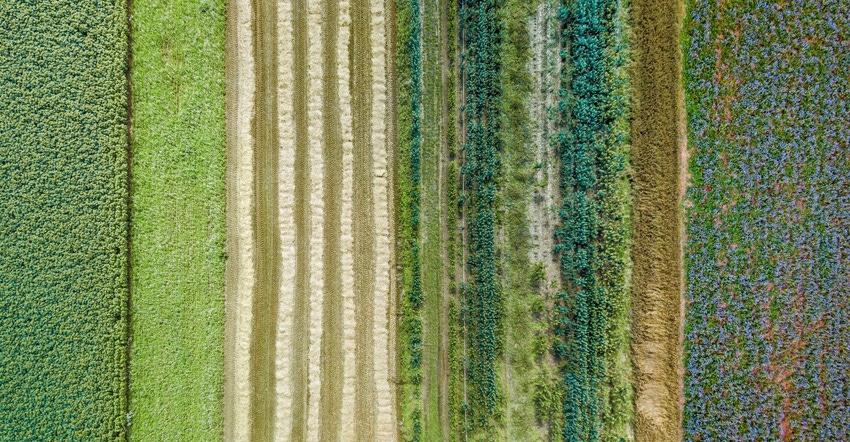- Supply Chain
- Food Ingredients
- Fruits, Vegetables, Nuts, Seeds
- Grains
- Food and Beverage Operations
- Manufacturing
Regenerative agriculture not only supports sustainable farming practices; it may actually help reverse eco-damage and more reliably boost the supply chain.

Severe climate-related events have often become a matter of when, not if. Extreme wildfires, unseasonable tornados and hurricanes, prolonged droughts and flash floods have become the norm, frequently disrupting business continuity and logistic operations. To maintain the long-term viability of the supply chain, food and beverage companies must take an active role—not simply adapting to these changes, but actively mitigating them.
While sustainable farming practices aim to limit the damage to land and water resources, regenerative agriculture practices reverse it, securing smallholder farmers’ and agribusinesses’ ability to continue to provide a stable supply chain. It can mean the difference between simply surviving and thriving.
In regenerative farming, the grower takes more of a “stewardship” approach to the farmland, focusing on creating synergy among crop, soil, livestock and the natural environment. The ultimate goal is to end up with healthier, sturdier, more nourishing farmlands that do what soil does best—capture and store carbon.
Practices include minimizing tillage, planting cover crops, and encouraging biodiversity in crops and livestock to deliver critical nutrients back into the soil, prevent erosion and attract a variety of pollinators. Instead of allowing cattle to overgraze in designated pastures, regenerative agriculture “invites” them to graze on fallow cropland where they till the soil and integrate fresh fertilizer into the land, simply by being there.
Building soil health requires avoiding physical, biological, and chemical damage and minimizing disturbance to the soil. It’s reinforced by ensuring the soil contains living roots, covering it with vegetation to prevent erosion, hinder weed growth and maintain arability. Regenerative agriculture avoids tilling, using unharvested farm waste as mulch to prevent carbon release.
In the absence of strong governmental funding and educational initiatives in some of the most climate-sensitive bread baskets in the world, food and beverage comapnies are presented with a rare, historical opportunity to reshape agricultural practices and ensure a livable future. Many brands are taking the lead, sharing best practices with their smallholder farmers and agribusiness suppliers around the world, including General Mills, Nestlé and Kellogg’s.
These food and beverage companies—along with many others—are focusing on tactically distributing funds, training and resources to enhance resilience, gain carbon credits, and strengthen the communities and yields their businesses continuity depend on.
When food and beverage brands encourage their suppliers to embrace crop diversity, it’s a win-win for both sides. Both the companies and the farmers reduce their risks; food and beverage brands have greater access to a stable supply of crops; and farmers ensure that if one crop is felled by disease, pest or other crop issues, they are following best practices to eliminate the problem and rely on other crops to send to market. Crop diversity also provides a broader range of nutrients for pollinators, such as bees and butterflies, who are critical to ensuring the long-term agricultural health overall.
By implementing regenerative agriculture, farmland productivity and quality of output increases—giving food and beverage producers more stable supply chains while driving environmental improvement.
Amit Noam is COO of Agritask, whose agronomic intelligence (AgI) platform powers advances for food and beverage, farmers and others in the agrifood supply chain. Noam has extensive management experience across industries, especially in roles focusing on using data to direct company strategies.
About the Author(s)
You May Also Like






